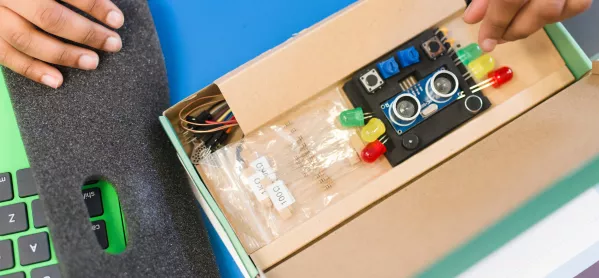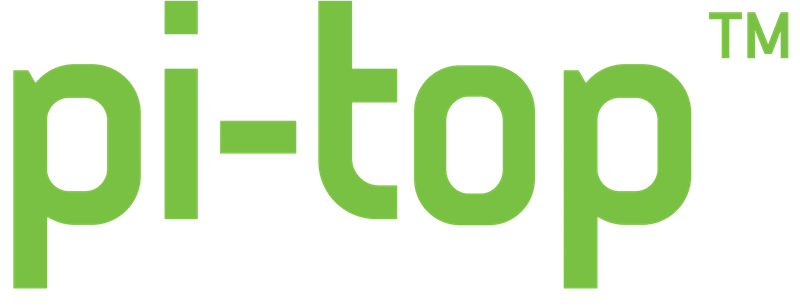You’re never too young to become digitally creative

Learning can take place in many forms, but one of the most effective methods is to learn through making. Rather than just being a “bolt-on” to more conventional lessons, learning through making should be seen as a way for students to extend their knowledge by being physically hands-on in an engaging and supportive environment. As an outcome of this, students are more likely to experiment, accept mistakes and work together.
The beauty of learning by making is that everyone can be involved. This approach is not to be seen by learners as competitive, but as an opportunity to come together to use and celebrate the skills of others, while also being given a voice to sound their own ideas. Through our own natural curiosity and desire to experiment, trial and tinker, people of all ages and backgrounds can collaborate, share ideas and feel a sense of accomplishment from creating something they can call their own.
This method can be applied to our young engineers. Learning by making through digital application allows students to problem-solve, collaborate and develop computational thinking. And there has never been a better time to try it, given the range of equipment out there to help pupils become digital makers, such as Raspberry Pi and pi-top. It’s exciting to see that the uptake of digital making is on the rise; the recent release of Nintendo Labo for its Switch system shows that more and more people are keen to see their creations come to life.
Through digital making, we can make the leap from being a programmer to becoming an engineer: it can blend together creativity with technical proficiency to create stunning results; and it can promote collaboration and other social skills, such as designating roles, sharing workload and combining ideas - significant qualities in today’s workplace.
The best learning can take place when students work together in a stimulating and social environment in which risks are promoted, mistakes are celebrated and perseverance is encouraged. Through digital making, you can provide these opportunities while also allowing students to explore, tinker with and test innovative ideas.
Primary practitioners may be apprehensive to explore this with their pupils, believing that digital making is overambitious for them and that schools lack the resources, time and expertise required for such high aspirations. But here are several fantastic projects I’ve undertaken with my students that have produced some great learning.
1. Stop, Wait, Go with traffic lights
Programming a set of traffic lights is an activity that can teach invaluable programming concepts. It’s a great activity to do with lower key stage 2 children, in which they have to carefully plan out the algorithms needed to complete the task. Given the nature of how traffic lights work, this is a good introduction to sequencing tasks in order; repetition of a flashing light; and of the whole sequence and selection following the button being pressed. It also reinforces work in science about circuits and switches.
Where this activity has creative potential, though, is by determining what you do with your lights when programmed. The Raspberry Pi is well equipped and versatile enough for children to create a working cardboard traffic light model that responds when a button is pushed. Taking it a step further, and lowering the cost of buying pre-made switches, children can physically make their switches in a variety of ways using everyday objects, such as cardboard, tin foil and paperclips.
This is a great introduction to digital making, as it provides a simple, well-known set of algorithms that then allow students to concentrate on other important qualities needed to be an effective engineer. From a design perspective, it’s a good introduction to project-based learning, as students can apply their knowledge and skills to a contextually based task. It’s an opportunity to problem-solve together, assign tasks to each other and extend their ideas of what they want the end product to look like.
2. Simon says ‘get coding’
Another great idea is to have children design a variant of the “Simon says” game. I used the Raspberry Pi and pi-top with a group of Year 5 children who were already developing a sound understanding of computational thinking and were looking for a challenge. After becoming comfortable with the term “variable”, we came up with an algorithm that would generate a sequence of LED flashes by assigning a value to different LED bulbs. By using the switch idea from the lights, the children coded the switches to correspond with a certain colour. The final piece of coding regarded selection: if the switches pressed matched with the generated sequence, then a new sequence was given. If an incorrect answer was given, the sequence was repeated.
This was all done using Scratch, built into the Raspbian OS, as the children were comfortable with the design interface and programming blocks. It was quite easy to differentiate, as you can adjust the number of LEDs used, the length of the sequence and the generation of new sequences. The children were able to control the direction they took the project in by adding their own ideas - for example, adding an on-screen timer.
It’s more advanced than the traffic-light activity and the children found themselves making a lot of errors in their code. However, due to the engaging nature of the activity and the fact that they were collaborating and combining their ideas with each other, they made fantastic progress over the course of a few lessons. We developed a mantra at the beginning of each session acknowledging that we would fail and face difficulties, but through perseverance and resilience we would overcome these obstacles. This helped pupils approach each session positively and, over time, they all produced something of which they were proud.
3. Speeding on with digital making
Digital making is excellent for providing tasks that are engaging and end with a finished product, while also creating opportunities for teamwork and exploration. Task pupils with designing and making a vehicle to race on a track they have designed themselves. The depth of conversation about how they will create their vehicles, what the features will be and the potential issues that may arise from making is always fascinating. Once my pupils had collaborated on the design, they constructed simple motor vehicles as a team, which could be controlled via Bluetooth, then worked together to design and construct a racecourse for their vehicles to traverse.
This project marked a brilliant culmination of all the benefits of digital making: critical thinking, innovation, collaboration and context-based learning. The students had to work closely together to first build their vehicles, then create the code before finally designing their course. Many errors were made along the way: the designs weren’t fit for purpose, the code was buggy and some courses were impossibly difficult to manoeuvre. Yet, as teamwork was heavily promoted for this project, many of them overcame these challenges and even aided “rival” teams to get their vehicles up and running.
The engineers of the future
Humans are naturally curious and never more so than when we’re children: they have a fantastic thirst to know why and how something works, and to turn their own ideas and dreams into something tangible. Never be afraid to let children explore their vision for a project. Guide them, suggest alternatives, but never immediately quash an idea. Empowering learners to play, collaborate, experiment and explore is paramount to developing creative thinkers. These people are our engineers of the future and one small idea can grow into something huge. When faced with a group of enthusiastic youths, you have no greater audience to explore innovative ideas.
Dan Cumberland is a computing lead and CAS Master Teacher at the Grove Primary School in Cambridge
